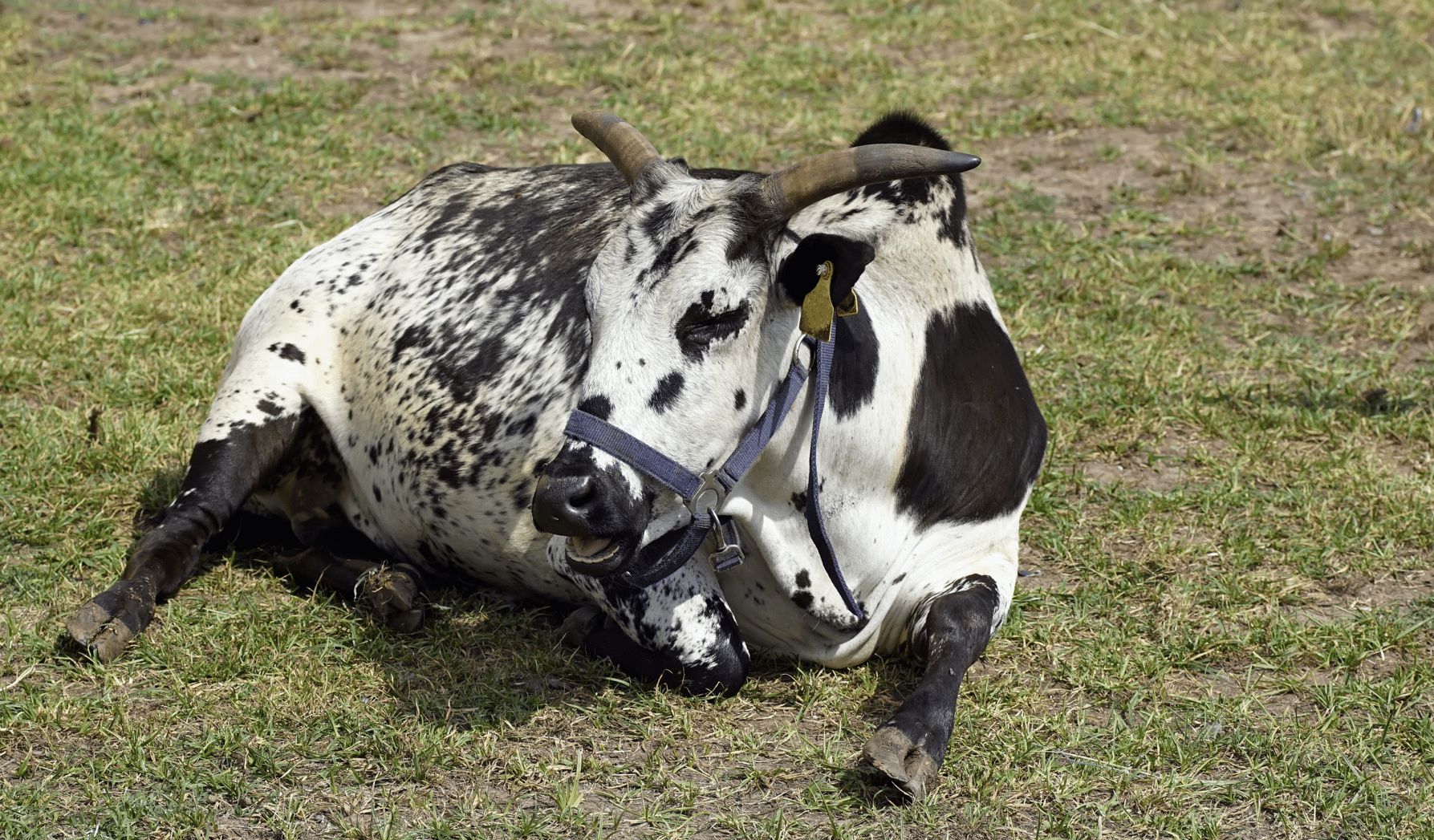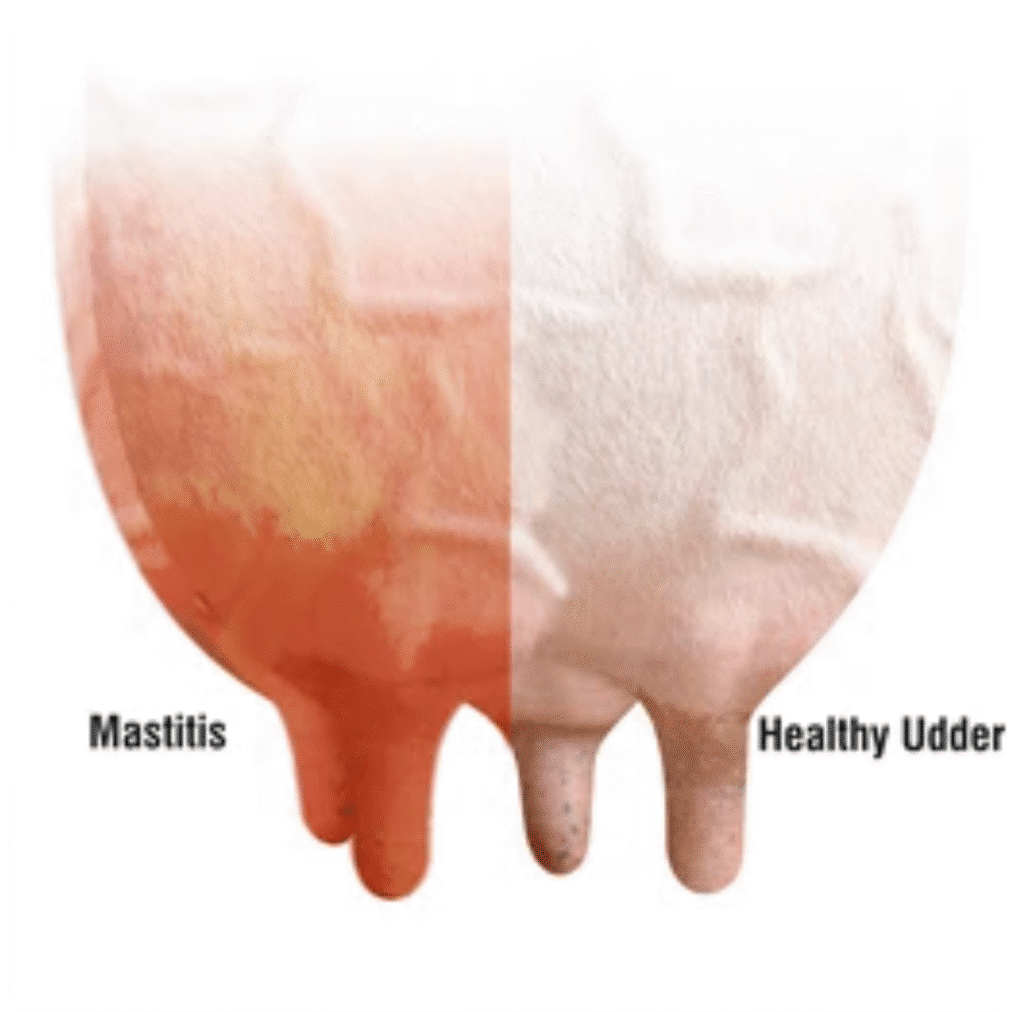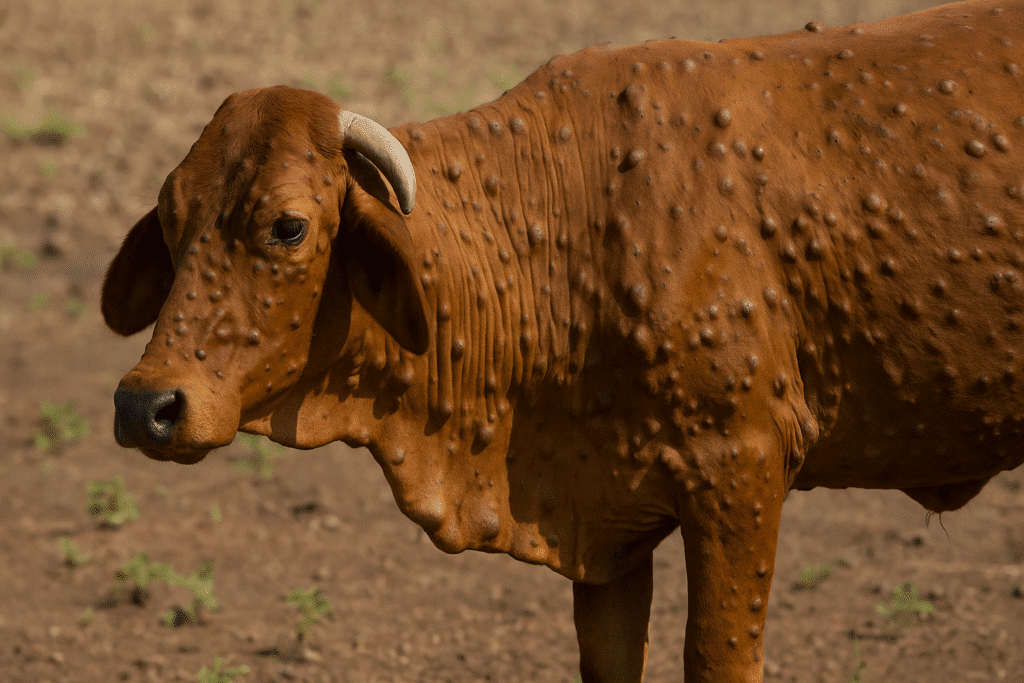White Muscle Disease (WMD), also called Nutritional Muscular Dystrophy or Nutritional Myopathy, is a disease in cattle that makes the muscles weak, stiff, and pale. It gets its name from the white streaks that appear in the muscles, mostly in the legs and heart. Cattle with white muscle disease often have trouble standing or walking. In severe cases, calves may die suddenly from heart failure.
The disease happens mainly because of a selenium deficiency in calves and a lack of vitamin E in their diet. These nutrients keep the muscles healthy and protect them from damage. When cattle don’t get enough selenium or vitamin E from their feed, the muscle fibers start to break down. This problem is common in areas where the soil and grass have very low selenium levels, which means the feed doesn’t provide enough of it.
White muscle disease in cattle mostly affects young calves, especially those born to cows that didn’t get enough selenium and vitamin E during pregnancy. This condition can also occur in sheep and goats; learn more about White Muscle Disease in sheep and goats.
Older cattle can also get it if their diet remains low in these nutrients for too long. The disease is not contagious, but it can cause significant losses by weakening calves and reducing growth. It is easily prevented by providing adequate selenium and vitamin E through mineral mixes, fortified feed, or veterinary injections.
White Muscle Disease: Signs and Symptoms in Cattle/calves
Early signs of white muscle disease in calves include weakness, stiffness, and reduced movement. The calf takes short, careful steps and gets tired after walking only a little. When it lies down, some calves tremble when walking or even while drinking milk. They prefer lying down most of the time instead of moving around. These are the most common symptoms of white muscle disease in young calves.
As the problem worsens, the muscles in the shoulders, legs, and back start to swell and feel hard when you touch them. The calf becomes wobbly and may fall after taking a few steps. Sometimes it’s the back curves upward or the head hangs low because the muscles can’t support the body properly. One clear sign many farmers notice is knuckling over in calves, which usually points to a selenium deficiency, the main cause of this disease.
When the muscles in the neck or tongue are affected, the calf struggles to drink milk and may let it drip from its mouth. If the chest muscles weaken, breathing becomes fast and heavy, even when the calf is resting. In more serious cases, the calf can’t stand at all — it stays down, tries to rise, and falls again. It eats very little, loses weight quickly, and grinds its teeth from pain.
In some animals, the clinical signs of white muscle disease in cows and calves show up in the heart instead of the body muscles, and this is much more dangerous. A calf might look perfectly fine one moment and suddenly collapse after walking or suckling. You might notice that it breathes fast. The heartbeat feels quick or uneven, and the veins in the neck look swollen.
The ears and legs feel cold because the blood isn’t moving properly. In the worst cases, you might see foam or blood coming from the nose or mouth, which means the lungs are filling up with fluid. Even in most cases, the calves die within 2 to 3 days due to the effects of white muscle disease on the heart muscles.
Causes of White Muscle Disease in Cattle/calves
Selenium and Vitamin E are the main causes of White Muscle Disease in Cattle.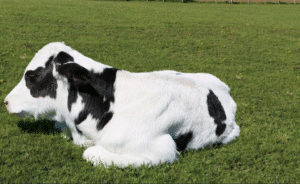
The main cause is usually selenium-poor soil. Grass or fodder grown on such land doesn’t have enough selenium, so even if animals eat plenty, they still end up with selenium deficiency in cattle. Cows that are short on selenium often give birth to weak calves, and these selenium-deficient calves struggle to stand, walk, or suck properly within their first few weeks of life.
If a cow is already low in selenium before calving, she can’t pass enough minerals to her baby through the placenta or milk. That’s why calf selenium deficiency is common, and the calves show early signs of White Muscle Disease.
Lack of vitamin E makes this condition worse. In some herds, vitamin A deficiency in cows also plays a crucial role. Calves with vitamin A deficiency often look dull, eat less, and grow slowly. When these vitamin shortages combine with low selenium, the muscles weaken faster.
Treating White Muscle Disease in Cattle
Treating white muscle disease begins with giving selenium and vitamin E through feed or injection, depending on the cattle and calf situation. These nutrients help rebuild weak muscles and restore strength. The most common and effective way is through a Bo-Se injection for calves, or sometimes Mu-Se, depending on what’s available. These injections supply the body with the selenium it needs and start working quite fast.
The dose depends on the calf’s weight, so it’s important to be careful. Usually, about 1 milligram of selenium and 50 milligrams of vitamin E are given for every 18 kilograms (around 40 pounds) of body weight. The injection can be given either under the skin or into the muscle. If needed, it can be repeated after about two weeks, but not more than four times in total. It’s very important not to overdo it. Too much selenium can be poisonous, while too little won’t help the animal recover.
After giving the Bo-Se injection, focus on keeping the calf warm, dry, and rested. Don’t let it walk too much or lie in cold or muddy areas. If it’s too weak to suck milk, help it drink using a bottle or a feeding tube. Offer small, warm feedings several times a day, as this allows the calf to stay strong and regain energy.
It’s also a good idea to mix in a mineral supplement that has selenium and vitamin E, since that supports muscle repair and helps prevent the problem from coming back. Please stay away from oily or fatty feeds, because they make it harder for the body to absorb vitamin E. Always make sure the feed is fresh, clean, and easy to digest, so the animal can recover faster and stay healthy.
Sometimes, calves with white muscle disease also develop heart or lung problems. Even after getting selenium, they may still have trouble breathing or remain weak. In these cases, a vet might give fluids, glucose, or antibiotics to speed up recovery and prevent infections from setting in.
If the problem is mostly caused by a vitamin E deficiency, then adding vitamin E supplements or vitamin-rich feed can help. Start with a higher amount at first, then continue with smaller daily doses until the calf improves. Also, try to avoid oily or high-fat feeds, as they can make the vitamin E problem worse.
Most calves begin to recover within a day or two after proper treatment. If the muscles or heart are badly damaged, it may take longer. Keep the calf comfortable, keep feeding it well, and watch for any signs of weakness or trouble breathing. If it starts getting worse again, it’s best to get a vet to check it.
Prevention of White Muscle Disease in Cattle
The best way to prevent white muscle disease in cattle and calves is to make sure they always get enough selenium and vitamin E. These nutrients are essential for strong muscles and overall health, especially in young and growing animals.
Balanced Feeding
Make sure your cattle get a daily mix of fresh green fodder and good-quality roughage. 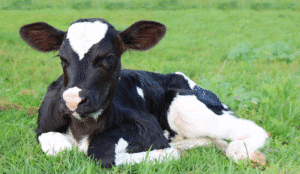
Selenium-Rich Feed Sources
Some natural feeds, like barley, oats, corn, and soybean meal, provide selenium if grown in selenium-rich soil. But since soil levels vary by region, it’s safer to include mineral mixes or mineral licks that contain selenium and vitamin E in their daily diet. This ensures your cattle get a reliable source of these important nutrients.
Supplements for Prevention
In areas with low selenium, supplements are very important. Options include:
- Bo-Se, E-Se, or Selecron injections (given by a vet).
- Selenium-vitamin E boluses, which release minerals slowly over time.
- Fortified feed premixes or mineral blocks that contain selenium and vitamin E.
Pregnant cows should get these supplements about one month before calving. This helps the calf develop strong muscles before birth and also keeps the cow healthy during pregnancy.
Regular Nutritional Checks
It’s a good idea to work with a vet or livestock nutritionist to check feed quality and mineral levels regularly. Testing fodder for selenium and vitamin E helps you know when extra supplementation is needed and ensures your herd is getting a balanced diet year-round.
Good Management Practices
Keep calves in clean, dry, and warm housing, especially during cold or wet weather. Provide fresh, clean water and maintain consistent feeding schedules to reduce stress. Make sure every newborn calf gets colostrum in the first few hours of life, as this builds immunity and supports healthy muscle development.
FAQs related to White muscle disease
How to treat white muscle disease in calves?
White muscle disease in calves is treated using selenium and vitamin E, often through a Bo-Se or Mu-Se injection. The dose depends on the calf’s weight and should be given by a vet to avoid overdose. Keep the calf warm, dry, and rested after treatment. Provide small, frequent milk feedings to help it regain strength.
Can white muscle disease be cured?
Yes, white muscle disease can be cured if treated early with selenium and vitamin E. Most calves start improving within a couple of days after the injection. However, if the muscles or heart are badly damaged, recovery may take longer, or the calf might not fully recover.
What is another name for white muscle disease?
White muscle disease is also called Nutritional Muscular Dystrophy or Nutritional Myopathy.
How is white muscle disease diagnosed?
White muscle disease is diagnosed by observing muscle weakness, stiffness, and difficulty standing in calves. A vet may also confirm it with blood tests for selenium and vitamin E levels or examine affected muscles for characteristic changes.
What does it mean if a muscle is white?
If a muscle appears white, it usually means the muscle fibers have degenerated due to a lack of selenium or vitamin E. This is a hallmark of white muscle disease, showing that the muscles are weak and damaged.
Is muscle disease serious?
Yes, muscle disease can be serious. In cases like white muscle disease, severe muscle weakness or heart involvement can make calves unable to stand, move, or even breathe properly, and it can be fatal if not treated quickly.

